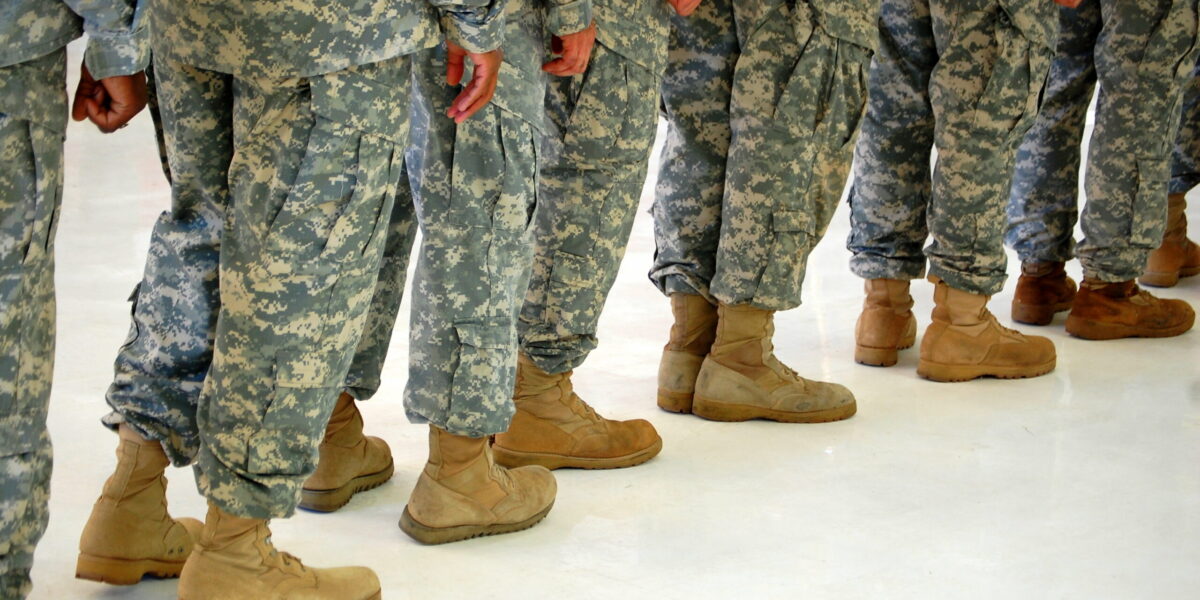Military presence in schools
The U.S. Army alone manages 1,650 recruiting stations staffed by 7,600 recruiters across the country. These and other branch’s offices are bases of operation—if one does not count public school districts. Without a draft, the United States is dependent upon a steady flow of new enlistees, and what better hotbed exists than the classrooms and cafeterias of America’s teenagers? It is a hormonal world of bravado, where next weekend can sometimes feel as far away as next year.
Recruiters know that. The U.S. Army School Recruiting Program Handbook states in section 1.1 on page 1, "School ownership is the goal." Free trinkets are emblazoned with websites and phone numbers. There are "free" T-shirts and bigger ticket items that come at a price (like perhaps, an email address or specific number of push-ups). College tuition is dangled and sweet stories about how well the military takes care of its brood abound … until the drill sergeant at boot camp barks about how your mama ain’t here.
No Child Left Behind Section 9428 allows military recruiters access to public secondary school students’ names, addresses, and telephone listings in exchange for federal funding. Federal funding is also jeopardized if recruiters are not allowed access in the building during school hours. This often takes the form of a table in the cafeteria or hallways. However, some zealous recruiters even pull students out of classes to discuss their many and varied opportunities in the Armed Forces.
ASVAB tests: (Armed Services Vocational Aptitude Battery) are often given to high school students as a way to determine what career strengths a student might possess. However, nowhere is it mentioned the test is required for entrance into the U.S. Armed Forces and the results are administered by the United States Military Entrance Processing Command. Many school counselors present the test purely as a means of determining career aptitudes, but it’s also a pretty easy way for the military to get to know minors more intimately.
Advertising: In 2008 the Pentagon’s recruiting and enlistment budget totaled $7.7 billion. This includes print advertisements, television commercials, online advertising, NASCAR sponsorships, and many other advertising media. The Army alone had access to roughly a half billion extra dollars tagged for cash enlistment bonuses. In 2009, the Department of Defense estimated it spent about $10,000 per recruit, taking into account advertising, recruiter time, and office leases for recruiting stations. (In fact, an evening discussion analyzing the messages contained in advertisement materials – including matters such as race, class and gender – can instill valuable critical thinking skills.)
The Pentagon routinely keeps its finger on the pulse of America’s youth through JAMRS (Joint Advertising Marketing Research & Studies). JAMRS not only tracks demographic trends and creates appropriate advertising campaigns, but also collects data on 16- to 25-year-olds, including addresses … which means No Child Left Behind is not the military’s only means of acquiring contact information. Other sources of such data include the Department of Motor Vehicles and the Selective Service System.
Economics: Reflecting the extent of the economic crash and unemployment, about 169,000 new recruits joined the armed forces in 2009; the Pentagon’s biggest recruiting year since the draft ended in 1973. But the military offers more than a steady job: There is also free housing, college money, child care, and relatively universal health care. Recruiters receive detailed instructions on how to target those who won’t go on to college and those who will not finish college. Individuals from rural, economically depressed areas are overrepresented in the ranks.



